by Rod Leslie
Yesterday, 8th December 2011, marks a milestone for England’s Ancient Woodlands…
At 11am Professor Oliver Rackham personally felled the last conifer in Chalkney Wood!
Chalkney Wood near Earls Colne in north Essex is one of the ‘Lavenham Woods’ managed by the Forestry Commission that played a central role in the research that led to the concept of ‘Ancient Woodland’. Like so many other ancient woods, the Chalkney that Oliver wrote about in his seminal 1980 book ‘Ancient Woodland’ had been heavily planted with conifers by the Forestry Commission. Despite that he said that ‘Chalkney still gives one of the best impressions of medieval wood’.
I first visited Chalkney, with Oliver, in 1988. 3 years earlier thanks very largely to the work of Oliver Rackham and George Peterken forestry policy had changed dramatically to recognise the unique value of ancient woodland. However, the idea of actually removing conifers was quite revolutionary to the Forestry Commission and in what must be some of the earliest restoration in England local forester Simon Leatherdale had started some tentative felling along streams and ride sides.

Simon Leatherdale of the Forestry Commission who has spent over 20 years restoring the famous ‘Lavenham’ Ancient Woods
Today is the culmination of that early, cautious work. Simon has been working away ever since, gradually removing conifers. All the work has been done at a profit and by local ‘Higglers’, small scale forestry contractors. Support within the Forestry Commission has come and gone over that time: there were still people who saw felling immature trees as sacrilege.
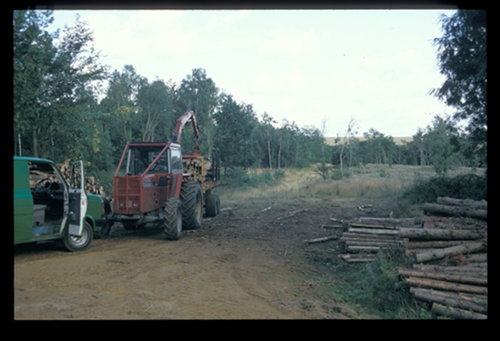
A ‘Higgler’ – a small scale forestry contractor – at work removing conifers in the Lavenham Woods. Here few broadleaves survived but coppice regrowth quickly re-establishes native species.
His work has been even more significant than simply restoring these very special woods: in 1985 both Oliver and George talked about woods ‘destroyed’ by conifer shading. Of Chalkney Oliver said in 1980 ‘ the native vegetation partly destroyed’.
Most of us would have agreed at the time: how could ground flora recover when the forest floor was quite bare apart from a carpet of conifer needles ? However, as Simon let the light back in, sometime by thinning, sometimes by felling, it became clear to Oliver that the woodland’s regenerative capacity was far greater than anyone had guessed. In fact today it would take a real expert to identify that many of the earliest restorations had ever had a conifer on them. The discovery gave new impetus to the restoration programme as it became clear that it really was possible to return to something close to the original ancient woodland.
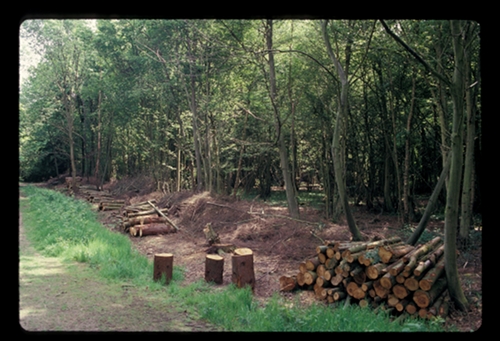
Early restoration: Conifers thinned out from amongst surviving broadleaves along a rideside. As of today not one conifer is left in Chalkney.
200 acre Chalkney is the quintessential Rackham wood: it is a ‘Pry Wood’ – Pry an ancient name for small-leaved lime. Largely ignored because of it’s absence from the pollen record, in recent times lime has been recognised as a key ancient woodland species. Chalkney is complex: as well as lime there is hornbeam, ash/maple/hazel, oak standards and even two wild service stools. The soils are acid sands and loess but calcareous springs feed the valleys.
Chalkney’s cultural history matches its ecological complexity. A Roman-British road dissects the wood which is still surrounded by intact medieval woodbanks. Once used for keeping ‘wild swyne’, probably after the extinction of true wild boar, there are early 17th century records of wood sales showing that lime bast, the bark used for making rope, was as valuable as the timber itself.
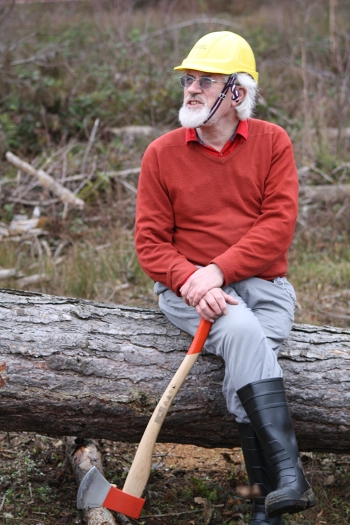
Professor Oliver Rackham, having a rest on the last conifer to be felled at Chalkney Wood, 8/12/2011




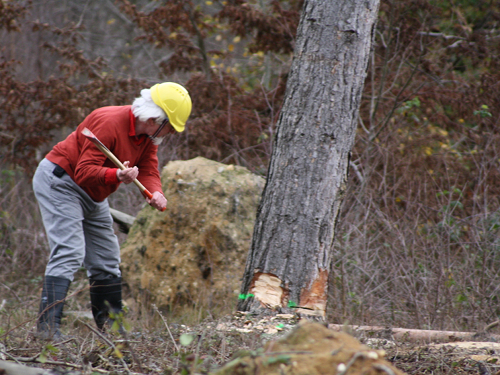
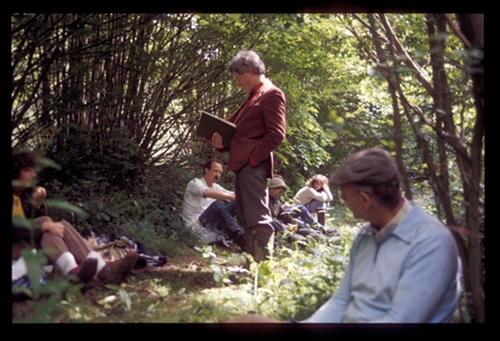

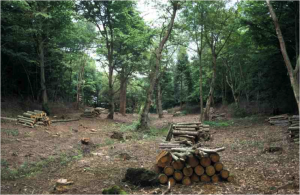























The article doesn’t say that about a third of Chalkney was never coniferised, was bought by and has for many years been managed by Essex County Council as coppice with standards. Their part of the wood is (still) richer in wildflowers, particularly anenomes and bluebells, but the TC part has recovered astonishingly, as the author says.
I was told that some of the credit goes to the earlier generation of foresters, who should have poisoned the old trees, but chose not to, and hence their roots and perhaps the seed bank remained viable to regenerate when the opportunity arose- which they have done spectacularly.
Christopher, you are quite right and I apologise if what I wrote misled at all – and Essex CC deserve credit for their conservation of their third ! It is very clear where the boundary lies in Oliver’s book because there is a full vegetation map for the Essex third and then large blanks of ‘vegetation obscured’ on the FC side. It’s great to hear that although the Essex side is still best, as you’d expect, the FC side is recovering so well. From when I was there a lot of the FC side was very pure conifer – but as we’ve seen at Chalkney and equally in Northants the seed bank can survive 50 odd years of no light and no regeneration.